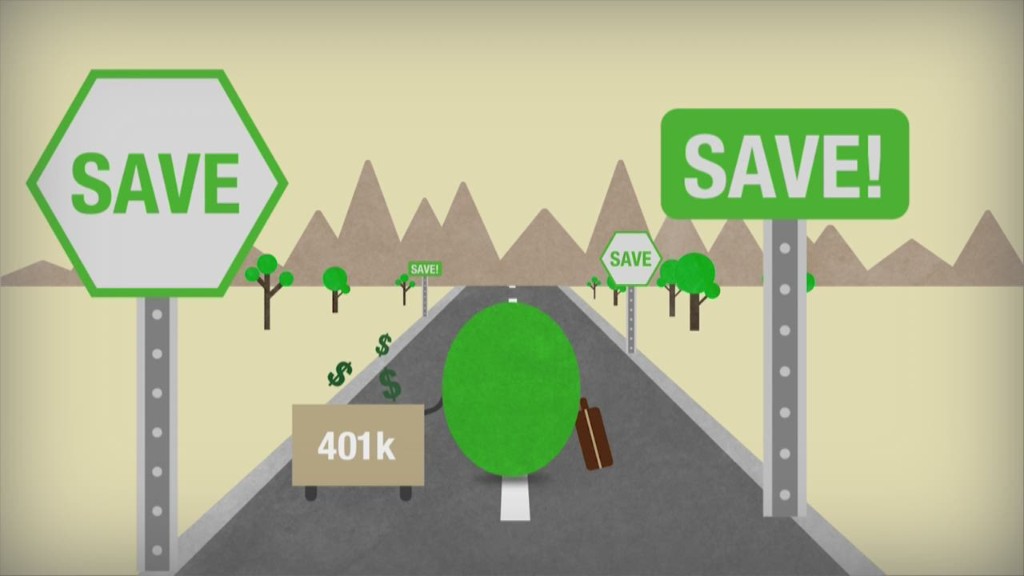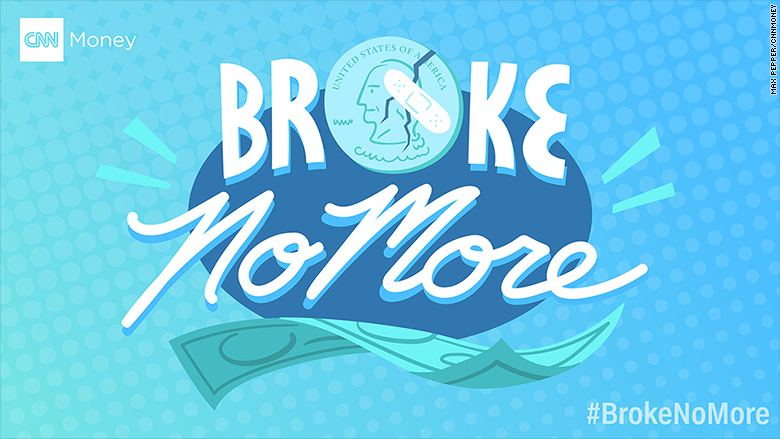
I am saving $30,000 annually. How do I diversify my savings? What portion should be cash, 401(k), IRA, stocks, bonds, etc.? -- Jessica Ochoa, 38
It's hard to put a number on how much of your savings should go into different accounts. But you should still have some kind of a strategy.
"You're already winning if you're thinking about how you should allocate your savings," said Devon Klumb, the co-founder of RhineVest, a wealth management firm that works with many young investors.
First, prioritize your money goals so you know what you're saving for. This can help determine where that money should be put away.
Are you saving for a wedding, a car, or a new home? Maybe you want to launch your own business or achieve financial independence so that you can quit your day job as quickly as possible.
Someone like Jessica, who's saving $30,000 a year, is probably ready to start building towards those kinds of goals. But it's OK if you're not there yet. We'll start with the basics.
Start with cash, and your 401(k)
The first two things you should tackle are building up an emergency fund in cash and saving enough in your 401(k) to get the full company match, if your employer offers one.
Most experts suggest saving three to six months' worth of expenses in your emergency fund -- and keeping this money in a savings account. We know they offer frustratingly low interest rates these days. But an online savings account or money market account could offer a higher interest rate than your bank.
While you're building that emergency fund, you don't want to ignore your 401(k), especially if your employer offers to match the money you put in.
"Start with what's offered by your employer. If free money is there, take it," Klumb said.
Keep saving for retirement
You're going to need a lot of money for retirement, especially if your employer doesn't offer a pension. So how much should you save? Some experts suggest to start by putting away 10% of your income for retirement.
"The honest truth is, though, you can pick a number and it won't be enough," Klumb said.
The good news is that retirement accounts like 401(k)s and IRAs have tax benefits that make them great places to put your money and invest it in a mix of stocks and bonds. (If you're decades away from retiring, you can be more heavily invested in the former rather than the latter.)

Klumb suggests opening a Roth IRA after contributing at least as much to your 401(k) to receive the full company match. With the 401(k), you're limited to investing in what's offered by the company plan. But you can diversify more with a Roth IRA.
You're also allowed to withdraw the money you contributed to a Roth IRA before you retire -- without penalty. Withdrawing from a 401(k) before the age of 59-1/2 could result in a penalty.
You can contribute up to $5,500 a year in a Roth IRA and Klumb suggests hitting that maximum before saving elsewhere.
How to save for short-term goals
Now, you could sock away more money in your 401(k) -- the annual maximum is $18,000 - - but you probably don't want all your savings to be earmarked for retirement.
"If you want to backpack around Europe and then start your own business, you don't want to put everything in retirement accounts," Klumb said.
If you'll need the money this year, keep the money in a savings account or money market. But if you have a few years to go, you might want to open a brokerage account so that your money will grow.
Related: How do I start investing?
A brokerage account doesn't offer the tax benefits of a retirement account but your money will be more accessible. How fast you can get your money depends on the custodian, but it shouldn't take more than five business days, according to Klumb.
How much of that account should be kept in stocks and how much should be kept in bonds depends on when you need the money.
"A portfolio that's 70% bonds and 30% in stocks is frankly not as risky as it feels," Klumb said.
Use an online calculator like this one to help you decide on the right asset allocation, or seek guidance from a certified financial planner.
